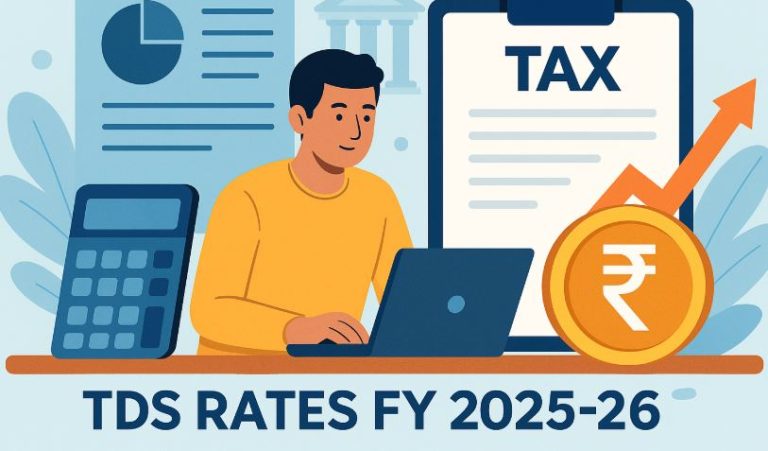The implementation of Goods and Services Tax (GST) in India has had a profound impact on the country’s economy. GST is a comprehensive indirect tax levied on the supply of goods and services, with the aim of simplifying the tax structure and eliminating the cascading effect of multiple taxes. This article will provide an overview of the impact of GST in Indian economy, including its effects on economic growth, tax revenue, and various sectors.
Understanding GST and its Implementation in India
In order to fully comprehend the impact of GST on the Indian economy, it is essential to have a clear understanding of what GST is and how it has been implemented in India. GST, which stands for Goods and Services Tax, is a comprehensive indirect tax system that has replaced multiple indirect taxes in India. The implementation of GST in India began on July 1, 2017, marking a significant milestone in the country’s tax reform.
The objectives of GST implementation in India were multi-fold. First and foremost, it aimed to simplify the existing indirect tax regime by introducing a unified taxation system. By streamlining the tax structure, GST aimed to eliminate the cascading effect of taxes and reduce the compliance burden on businesses. This move was expected to enhance ease of doing business in India and attract more investments into the country.
GST also aimed to broaden the taxpayer base by bringing previously unregistered traders and businesses into the tax net. This expansion of the tax base would result in increased tax revenue for the government and reduce dependence on direct taxes. Additionally, GST implementation was envisioned as a means to curb tax evasion and promote transparency in the tax collection process.
The GST system in India is structured into three components: Central Goods and Services Tax (CGST), State Goods and Services Tax (SGST), and Integrated Goods and Services Tax (IGST). CGST and SGST are levied by the central and state governments, respectively, on the supply of goods and services within their respective jurisdictions. On the other hand, IGST is levied on inter-state supplies of goods and services and is collected by the central government.
Under the GST regime, goods and services are categorized into different tax slabs, with varying rates such as 5%, 12%, 18%, and 28%. This classification ensures that different goods and services are taxed at rates commensurate with their nature and economic significance.
Analysis of Tax Revenue Performance Post-GST Adoption
In this section, we will analyze the tax revenue performance post-GST adoption in India. The implementation of the Goods and Services Tax (GST) has had a significant impact on the country’s tax revenue landscape. Let’s delve into the details and understand the key aspects of GST tax revenue analysis, GST revenue growth, and GST revenue performance.
Since its introduction in July 2017, GST has played a crucial role in consolidating and simplifying the Indian tax system. It has replaced multiple indirect taxes levied by the central and state governments with a unified tax structure, fostering transparency and efficiency in tax collection.

One of the primary objectives of implementing GST was to boost tax revenue for the Indian economy. The analysis of tax revenue post-GST adoption provides insights into the overall performance and effectiveness of this tax reform.
The growth of GST revenue has been a crucial indicator of the success of this tax reform. We will examine the financial data and trends to assess the growth trajectory and its implications for the Indian economy. This analysis will help us understand the contribution of GST to the total tax revenue of the country.
Additionally, we will explore the challenges and issues faced in the collection of GST revenue. Despite its numerous benefits, the implementation of GST has encountered some hurdles, such as tax evasion and compliance issues. Understanding these challenges is crucial for addressing them and ensuring the smooth functioning of the GST framework.
Overall, the analysis of tax revenue performance post-GST adoption provides valuable insights into the impact of this tax reform on the Indian economy. By evaluating the growth, performance, and challenges faced in the collection of GST revenue, we can gain a comprehensive understanding of its implications for the country’s fiscal landscape.
Exploring the Relationship between GST and Economic Growth
The implementation of GST in India has had a significant impact on the country’s economic growth. This section will delve into the relationship between GST and various economic indicators, highlighting its effects on the overall development of the Indian economy.
To understand the GST impact on economic growth, it is crucial to examine its influence on key factors such as GDP, investment, employment, and inflation. Several studies and empirical evidence provide valuable insights into this correlation and help us analyze the long-term implications of GST implementation.
GST has played a critical role in boosting India’s GDP growth. With the introduction of a unified tax regime, the Indian economy witnessed enhanced efficiency, reduced administrative burden, and increased compliance. This streamlined tax structure has facilitated ease of doing business, attracting both domestic and foreign investments, thus contributing to overall economic growth.
Furthermore, GST has also had a positive impact on investment and employment opportunities in the country. The simplification of tax processes and removal of cascading effects have encouraged businesses to expand their operations, leading to increased investment inflow and job creation. This, in turn, has bolstered economic growth and improved the standard of living for many individuals.
It is important to note that the implementation of GST has also influenced inflation patterns. By unifying taxes and reducing tax burden, GST has helped in mitigating price distortions and improving resource allocation. This has resulted in price stability, benefitting consumers and businesses alike, further contributing to overall economic growth.

As we explore the relationship between GST and economic growth, it is evident that the implementation of GST in India has had far-reaching effects on various economic indicators. The streamlined tax regime has strengthened the economy, attracting investments, creating employment opportunities, and promoting overall development.
Impact of GST in Indian Economy
The implementation of the Goods and Services Tax (GST) in India has had significant implications for the Indian economy. This section will discuss the overall impact of GST on the country’s economic landscape, considering its effects on various sectors and industries.
One of the primary areas of analysis has been the impact of GST on different sectors. Manufacturing, services, agriculture, and trade have all experienced changes as a result of GST implementation.

Within the manufacturing sector, GST has helped streamline tax processes and eliminate the cascading effect of taxes, leading to a more efficient and competitive environment for businesses. This has resulted in increased productivity and cost savings for manufacturers, ultimately contributing to the growth of the sector.
The services sector, being a major contributor to India’s GDP, has also witnessed significant changes. GST has simplified tax compliance for service providers and reduced the tax burden on consumers. This has resulted in increased consumer spending, boosting the overall performance of the sector.
For the agriculture sector, the impact of GST has been relatively positive. The unified tax structure has reduced the complexity in the supply chain, enabling farmers to access markets more conveniently and efficiently. Moreover, GST has facilitated the emergence of agri-based industries, driving agricultural growth and diversification.
Trade, both domestic and international, has also been influenced by GST implementation. The removal of multiple indirect taxes has enhanced the ease of doing business and facilitated seamless flow of goods and services across states. As a result, inter-state trade has become more streamlined and conducive for growth.
Despite the overall positive impact, it is essential to acknowledge the challenges and negative effects that GST has imposed on certain sectors. Some industries experienced initial disruptions during the transition phase, requiring time to adapt and adjust to the new tax regime. However, these temporary setbacks were outweighed by the long-term benefits of GST.
Overall, the implementation of GST has contributed significantly to the Indian economy. It has streamlined tax processes, eliminated the cascading effect of taxes, and created a more business-friendly environment. The effects on various sectors, such as manufacturing, services, agriculture, and trade, have been both transformative and promising, fostering growth and development.
Positive Impacts of GST on the Indian Economy

The implementation of Goods and Services Tax (GST) in India has brought about several positive impacts on the country’s economy. This comprehensive tax reform has led to numerous benefits for businesses, consumers, and the government.
- Simplified Tax Structure: One of the key advantages of GST implementation is the simplification of the tax structure. Previously, businesses had to deal with multiple indirect taxes, such as excise duty, service tax, and value-added tax (VAT). With GST, these various taxes have been consolidated into a single tax, making it easier for businesses to comply with tax regulations and reducing their administrative burden.
- Reduction in Tax Evasion: GST has significantly contributed to the reduction in tax evasion. The integrated system of GST allows for better tax tracking and monitoring, minimizing the scope for tax evasion and ensuring greater transparency in the tax collection process. This has resulted in increased tax compliance, leading to a broader tax base and higher revenue for the government.
- Improved Compliance: GST implementation has encouraged better tax compliance among businesses. The introduction of an online tax filing system and seamless flow of input tax credits have streamlined the tax compliance process. This has not only reduced the compliance cost for businesses but also enhanced tax administration efficiency.
- Increased Government Revenue: The implementation of GST has positively impacted government revenue. The broader tax base, improved compliance, and effective tax tracking have led to higher tax collections. This increased revenue can be utilized by the government for various developmental initiatives and infrastructure projects, thereby contributing to the overall economic growth of the country.
Overall, the benefits of GST are far-reaching. By simplifying the tax structure, reducing tax evasion, improving compliance, and boosting government revenue, GST has played a significant role in transforming the Indian economy. As businesses and consumers continue to adapt to the new tax regime, the positive impacts of GST are expected to further strengthen and contribute to sustained economic growth.
Negative Impacts of GST on the Indian Economy
The implementation of Goods and Services Tax (GST) in India has not been without its challenges and negative impacts. While GST aimed to simplify the complex tax structure and promote economic growth, several issues have arisen that have hampered its effectiveness.

One of the primary challenges of GST implementation was the initial disruption it caused to business operations. The transition from the previous tax regime to GST resulted in changes to processes and increased compliance requirements. Many businesses struggled to adapt to the new system, leading to temporary disruptions in supply chains and transactions.
Another significant issue with GST implementation has been the increased compliance costs for small businesses. The introduction of GST necessitated the digitalization of tax filing processes and the implementation of online platforms. However, these technological requirements posed a financial burden on small businesses, who had to invest in new software and systems to comply with the GST regulations.
Furthermore, the regressive tax implications of GST have affected certain sections of society disproportionately. The increase in tax rates for essential goods and services has had a negative impact on lower-income individuals and households, who have seen their purchasing power diminished as a result. This has led to concerns about rising inequality and the burden of GST on vulnerable segments of the population.
Despite these negative impacts, it is important to note that GST implementation is a complex process that requires time to stabilize. The short-term challenges faced during the initial stages of implementation should not overshadow the potential long-term benefits of GST on the Indian economy. It is crucial for policymakers to address the issues and challenges associated with GST to ensure a smoother and more equitable tax system.
Conclusion
In conclusion, the implementation of GST has had a transformative impact on India’s economy. The tax reform has not only boosted tax revenue and fostered economic growth but has also led to increased efficiency and transparency in the taxation system. As the nation continues its journey towards development, it is crucial to identify areas of improvement and refine the GST framework to ensure its long-term success.
FAQs
How was GST implemented in India?
GST was implemented in India on July 1, 2017. It replaced various indirect taxes levied by the central and state governments with a single tax applied to the supply of goods and services. The implementation involved extensive changes to the tax system and required businesses to update their accounting and reporting processes.
What are the objectives of GST in India?
The objectives of GST in India are to simplify the tax regime, increase the taxpayer base, reduce tax evasion, and create a common market across the country. By unifying taxes and removing barriers to inter-state trade, GST aims to promote economic growth and enhance ease of doing business.
How has GST impacted tax revenue in India?
Since its implementation, GST has contributed significantly to the tax revenue of India. It has streamlined tax collection processes and increased compliance, resulting in higher tax revenue for the government. However, challenges such as tax evasion and the need for continuous reforms persist.




